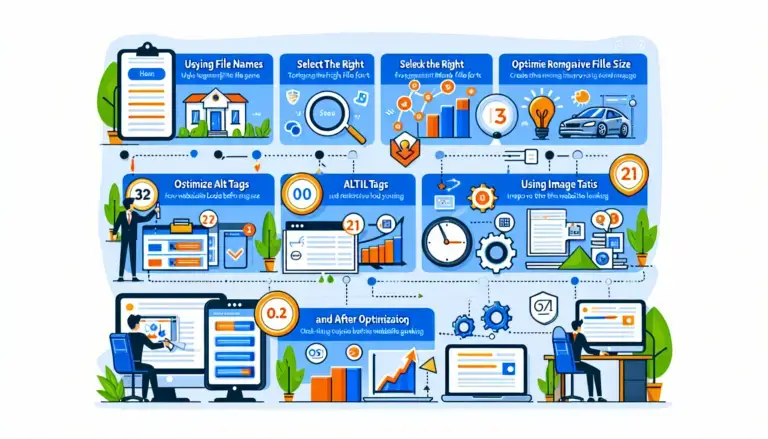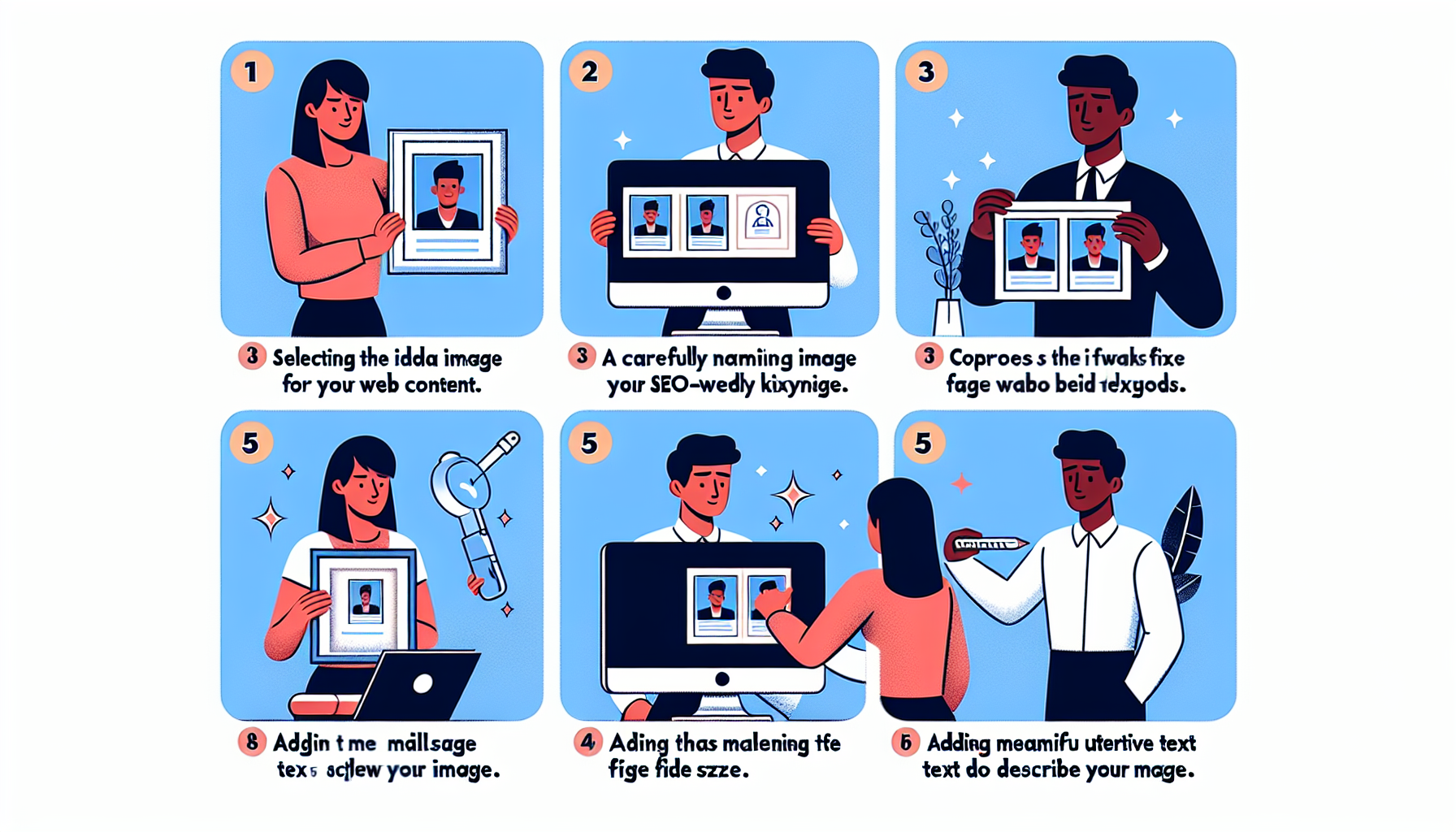Image SEO involves optimizing the images on your website to make them more attractive to search engines, thereby improving the visibility and ranking of your web pages. While traditional SEO focuses on text and keywords, image SEO requires an understanding of various elements such as file names, alt text, captions, and the physical size and quality of the image. Properly optimized images not only enhance the user experience by improving page load speeds and accessibility but also contribute to your site’s overall SEO strategy. Search engines like Google use sophisticated algorithms to analyze images, and ensuring that your images are properly optimized can lead to increased traffic from image search results and an overall better performance in search engine rankings. Image SEO is an essential component for creating a well-rounded digital marketing strategy that covers all aspects of content optimization.
Choosing the right file format
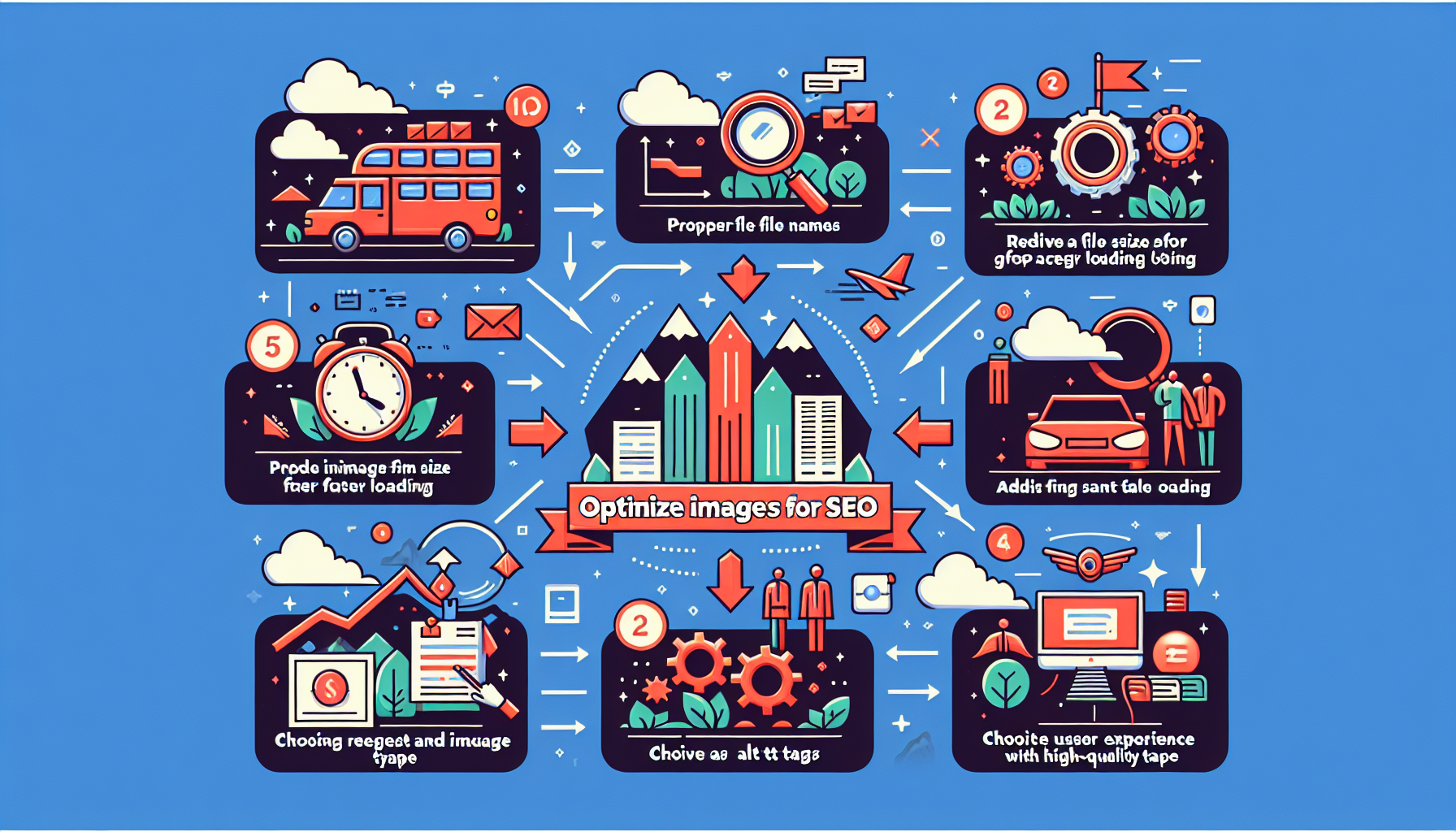
Selecting the appropriate file format for your images is a crucial aspect of image optimization. Different file formats serve distinct purposes and perform differently in terms of quality, compression, and loading speed. The three most commonly used image formats on the web are JPEG, PNG, and GIF, each with its own set of benefits and drawbacks.
JPEG, or Joint Photographic Experts Group, is widely used for photographic images due to its ability to compress file sizes while maintaining a relatively high quality. This format is ideal for images with complex colors and gradients, such as photographs and detailed illustrations. However, JPEG uses lossy compression, meaning some data is lost during the compression process, which can reduce image quality if over-compressed.
PNG, or Portable Network Graphics, is another popular format, especially for images that require transparency or higher quality. PNGs use lossless compression, ensuring no data is lost and thus providing higher image integrity. This makes PNGs an excellent choice for logos, icons, and images with text. However, the trade-off is that PNG files are typically larger than JPEGs, which can slow down page loading times if not managed properly.
GIF, or Graphics Interchange Format, is best suited for simple animations and images with a limited color palette. It supports animation and transparency, making it a go-to format for small, animated graphics like loading icons, short clips, and simple diagrams. However, GIFs are not suitable for detailed images or photographs due to their limited color range and larger file sizes for complex images.
Choosing the right file format involves understanding the context in which the image will be used. For visually rich content like blog posts and product photos, JPEG is generally the best choice. For images that require transparency or have text, such as logos or web graphics, PNG is more appropriate. Meanwhile, GIFs serve well for animations and simple icons. By selecting the correct file format, you can enhance both the visual impact of your images and their performance, contributing positively to your overall SEO strategy.
Using descriptive file names

The file name of an image file is crucial for image SEO. Search engines like Google not only read the content of your web pages but also analyze image file names to understand the image content. By using descriptive, keyword-rich file names, you provide search engines with more context, increasing the chances that your images—and thus your overall content—get indexed and ranked higher in search results.
When naming your image files, think about what someone might search for to find that image. Use concise, relevant keywords that accurately describe the image content. For instance, instead of a generic name like “IMG1234.jpg,” a more effective name might be “blue-running-shoes.jpg” for an image of blue running shoes. This not only helps search engines understand the subject of the image but also aligns with the keywords you are targeting for your page.
It’s important to use hyphens to separate words in the file name. Search engines read hyphens as spaces but cannot do the same with underscores or other characters. Therefore, a file name like “red-apple.jpg” is preferable to “red_apple.jpg” or “redapple.jpg.” This practice ensures that each word in the file name is correctly interpreted by search engines as separate entities.
Avoid keyword stuffing when naming your images. While it might be tempting to load the file name with as many keywords as possible, doing so can harm your SEO efforts. Not only can it make the file names unwieldy and unreadable, but search engines may also penalize you for attempting to manipulate rankings. Instead, use clear, natural language that precisely describes the image.
In addition to being descriptive, ensure that your file names are concise. Overly long file names can be truncated in some systems and may not be fully analyzed by search engines. Aim for a balance that provides enough context without being overly verbose—typically, file names should be within 3-5 words.
Another best practice is to standardize your naming conventions across your website. This consistency helps both search engines and users understand and navigate your images more effectively. Establish guidelines for file naming that everyone on your team should follow to maintain uniformity. This not only aids in SEO but also improves internal organization and image management.
Regularly audit and update your image file names as needed. If your SEO strategy evolves or new keywords emerge as important, make sure your images reflect these changes. While renaming image files on an established site can be time-consuming, the benefits to search engine visibility and user experience can make it worthwhile.
Optimizing alt text and captions
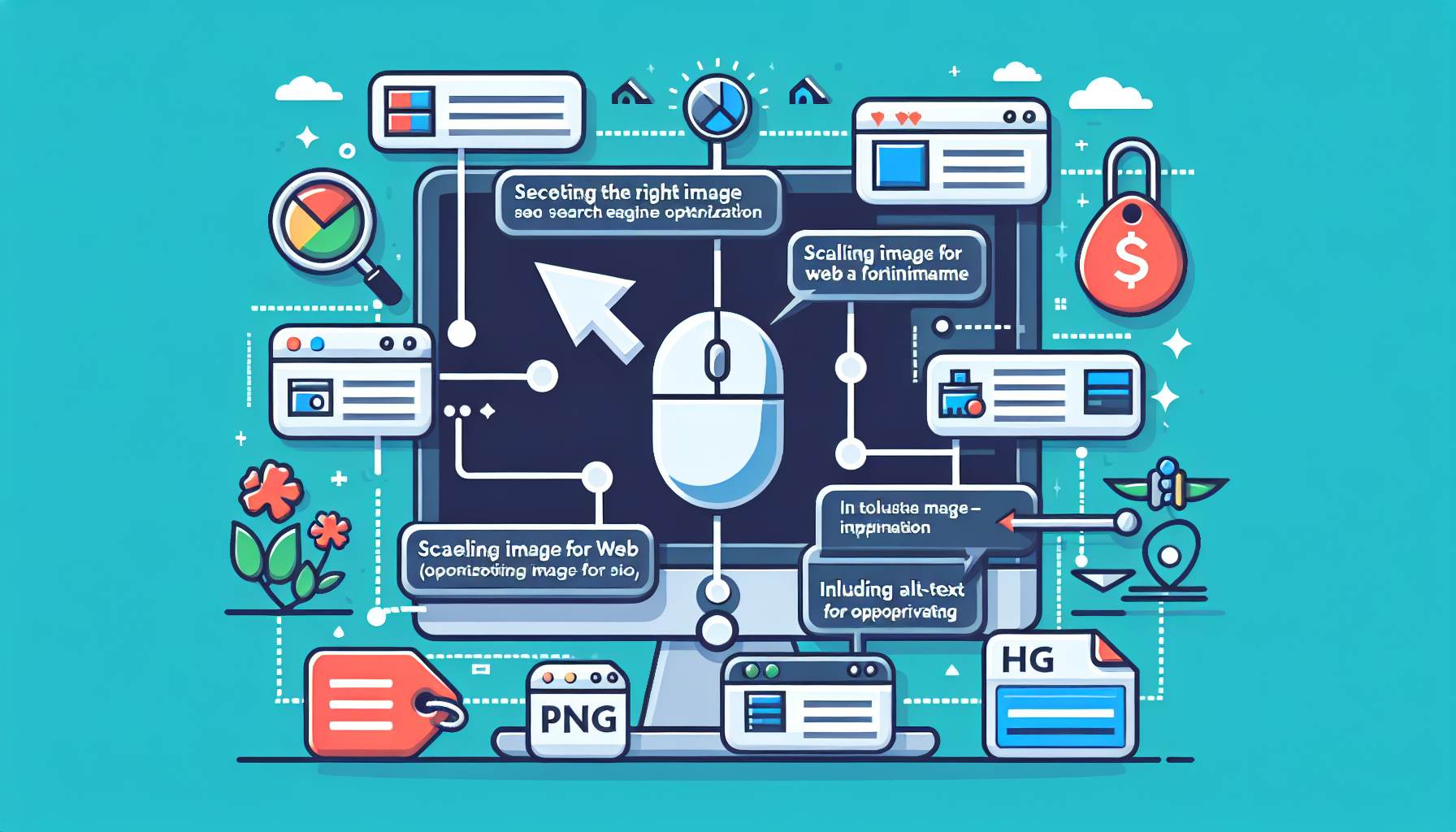
Alt text, or alternative text, is a fundamental aspect of image SEO. It serves multiple purposes, such as providing context to search engines and assisting visually impaired users who rely on screen readers to navigate the internet. Including descriptive alt text helps search engines understand what your image depicts, which can improve your rankings in image search results and enhance the overall SEO performance of your webpage.
When crafting alt text, aim to accurately describe the image in a concise manner. A well-written alt text should convey the essential information about the image without being overly verbose. For instance, for an image of a person riding a bicycle in a park, suitable alt text might be “Person riding a bicycle in Central Park” rather than something too vague like “Outdoor activity” or too detailed like “A person wearing a blue helmet riding a red bicycle on a sunny day in Central Park with trees in the background.” The goal is to strike a balance between descriptiveness and brevity.
Integrating relevant keywords into your alt text is beneficial for SEO but should be done naturally. Avoid keyword stuffing, as it can appear spammy and might be penalized by search engines. Keywords should fit seamlessly within the context of the description, enhancing clarity and utility without compromising readability. For example, if your target keyword is “organic apples,” an effective alt text for an image might be “Basket of organic apples at a farmer’s market.”
Captions are another important element to consider when optimizing images for SEO. Though not as critical as alt text, captions provide additional context for both users and search engines. Captions typically appear directly beneath images and are one of the first elements that users see when scanning a page. Well-written captions can improve user engagement by offering more insight into the image content, encouraging readers to spend more time on your page.
To get the most out of your captions, keep them relevant and informative. Aim to complement the alt text without repeating the same information. Captions should offer additional details that enhance the viewer’s understanding of the image and its relevance to the surrounding content. For an image of a chef preparing a meal, a caption might read, “Chef John Doe showcases his skills with a gourmet dish at the annual food festival,” providing context that adds value to the user experience.
Similar to alt text, captions can also benefit from the inclusion of relevant keywords. This practice not only helps with SEO but also makes your content more engaging for the reader. However, be careful not to over-optimize; the primary focus should be on delivering useful information rather than cramming in as many keywords as possible.
Incorporating descriptive alt text and captions into your images is a simple yet highly effective way to boost your SEO efforts. Spending a little extra time to accurately describe each image and provide context can significantly enhance your site’s accessibility, usability, and search engine visibility. Consistency is key—by applying these best practices across all images on your site, you create a more coherent and accessible experience for all users while ensuring your content is fully optimized for search engines.
Compressing images without losing quality
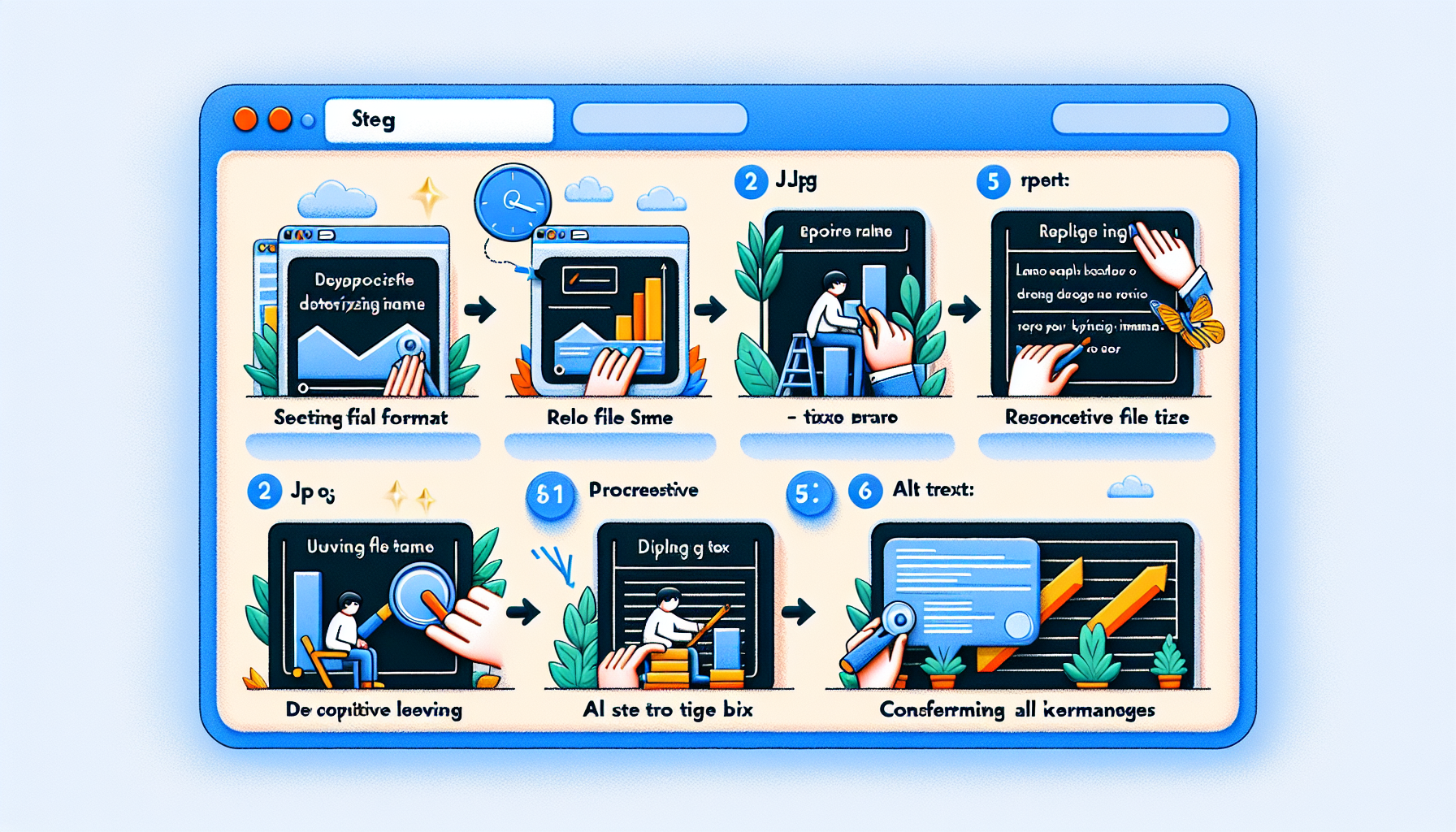
Compressing images is a vital step in the image optimization process, as it directly affects your website’s load times and overall performance. While high-quality images can enhance user experience, large image files can significantly slow down your site, leading to higher bounce rates and lower SEO rankings. Therefore, it’s essential to find a balance where images are compressed enough to improve loading speeds without sacrificing too much quality.
Start by choosing the right tools for image compression. Numerous online and offline tools can help you compress images effectively. Tools such as TinyPNG, JPEGmini, and Adobe Photoshop’s “Save for Web” feature are popular options for reducing file sizes without a noticeable loss in quality. Using such tools can make a considerable difference in both desktop and mobile load times, enhancing the user experience and positively impacting your SEO.
Before you begin compressing images, it’s crucial to understand the distinction between lossy and lossless compression. Lossy compression reduces file size by removing some of the image data, which might slightly degrade the image quality. Commonly used formats like JPEG use lossy compression. On the other hand, lossless compression reduces file size without any loss of image quality, typically used in PNG formats. Depending on the image type and its purpose on your website, you may choose one over the other. For photos and complex images, lossy compression is generally fine as long as the quality remains acceptable. For logos and other graphics where quality is paramount, lossless compression is usually the better choice.
It’s also important to resize your images before uploading them to your website. High-resolution images are often much larger than necessary for web use. Resize your images to the exact dimensions required for your web page to avoid uploading unnecessarily large files. Most image editing tools allow you to specify dimensions, and some CMS platforms support automatic resizing during the upload process. By resizing images to the appropriate dimensions, you can further reduce file sizes without compromising quality.
Another useful technique is to utilize modern image formats like WebP, which offers superior compression and quality compared to traditional formats like JPEG and PNG. WebP images are significantly smaller and load faster, making them a great choice for web usage. While not all web browsers support WebP, its adoption is growing, and many CMS platforms offer plugins or built-in support to serve WebP images to compatible browsers while falling back to traditional formats for others.
Additionally, consider implementing lazy loading for images. Lazy loading is a technique that delays the loading of images until they are about to enter the viewport. This means that images further down the page don’t load until the user scrolls to them, significantly speeding up initial page load time. Many modern website themes and content management systems support lazy loading either natively or through plugins.
Finally, always test your compressed images to ensure they maintain acceptable quality. It’s a good practice to compare the original and compressed versions side by side to ensure that the quality remains high enough for your site’s needs. This step is particularly important for images that play a key role in your site’s design or branding.
Compressing images without losing quality involves using the right combination of tools, techniques, and image formats to reduce file size while maintaining visual integrity. Properly compressed images enhance page load speeds, improve user experience, and contribute positively to your website’s SEO performance. By diligently applying these compression practices, you ensure that your site remains fast, efficient, and user-friendly.
